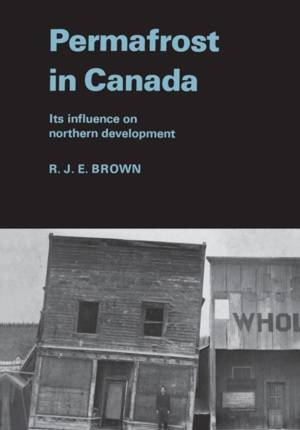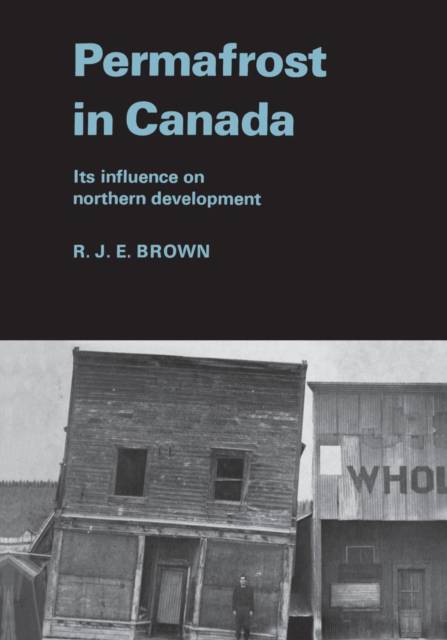
- Afhalen na 1 uur in een winkel met voorraad
- Gratis thuislevering in België vanaf € 30
- Ruim aanbod met 7 miljoen producten
- Afhalen na 1 uur in een winkel met voorraad
- Gratis thuislevering in België vanaf € 30
- Ruim aanbod met 7 miljoen producten
Zoeken
Omschrijving
Permafrost is the thermal condition of the earth's crust when
its temperature has been below 32°F continuously for a number of years. Half of Canada's land surface lies in the permafrost region--either in the continuous zone where the ground is frozen to a depth of hundreds of feet, or in the discontinuous zone where permafrost is thinner, and there are areas of unfrozen ground.The existence of permafrost causes problems for the development of the
northern regions of all countries extending into the Arctic. Mining operations are hindered by frozen ore which resists blasting and is difficult to thaw. Agriculture is restricted by the presence of permafrost near the ground surface which limits the soil available for plant growth.Engineering structures are also
affected by the low temperatures. Ice layers give soil a rock-like structure with high strength. However heat transmitted by buildings often causes the ice to melt, and the resulting slurry is unable to support the structure. Many settlements in northern Canada have examples of structural damage or failure caused by permafrost. In the construction and maintenance of railways, buildings, water and sewage lines, dams, roads, bridges, and airfields, normal techniques must often be modified at additional cost because of permafrost.For the last twenty-five years
scientific investigations and engineering projects have increased steadily in Canada's permafrost region, and it is now technically possible to build any structure or conduct any activity on the worst soils and under permafrost conditions.This comprehensive analysis of permafrost--its origin,
definition, and occurrence, and the effect it has on industry and agriculture--will be invaluable to the growing number of people working in the north and to those interested in its development.Specificaties
Betrokkenen
- Auteur(s):
- Uitgeverij:
Inhoud
- Aantal bladzijden:
- 246
- Taal:
- Engels
- Reeks:
Eigenschappen
- Productcode (EAN):
- 9781442651517
- Verschijningsdatum:
- 15/12/1970
- Uitvoering:
- Paperback
- Formaat:
- Trade paperback (VS)
- Afmetingen:
- 178 mm x 254 mm
- Gewicht:
- 435 g

Alleen bij Standaard Boekhandel
+ 148 punten op je klantenkaart van Standaard Boekhandel
Beoordelingen
We publiceren alleen reviews die voldoen aan de voorwaarden voor reviews. Bekijk onze voorwaarden voor reviews.











